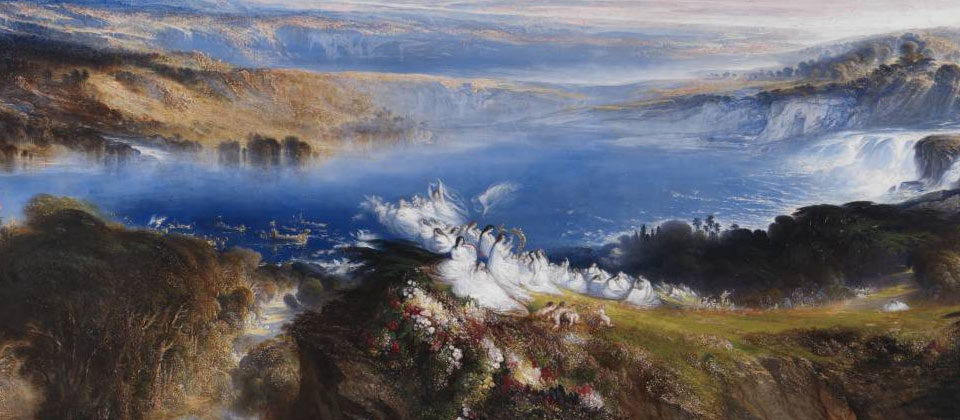The sublime
The sublime has long been understood to mean a quality of greatness that inspires wonder. From the seventeenth century onwards the concept and emotions it inspires have been a source of inspiration for artists and writers, particularly in relation to the natural landscape.
During the Italian Renaissance the initial concept started to arise. The depictions of Christ lifeless and suffering by Andrea Mantegna and Masaccio, as well as Raphael’s sketches and analyses of skeletons, inform us of the certainty of mortality and the unknowable – essential elements of the Sublime. However, it was only in the Romantic era that the Sublime as an artistic notion gained traction throughout Europe.
It all started with Nicolas Boileau’s translation of On The Sublime 1674 by the ancient Greek Longinus. Longinus stated here that the presenter should seek to create emotion and move his audience rather than just convince them. Longinus, who was primarily interested in languages, did speak momentarily about the aesthetic Sublime in both wildlife and man-made artefacts; in his opinion, vast scale and diversity may generate a sense of the Sublime.
-image analysis-

Théodore welcomes the observer onto the floor of the ship by enabling the sides of the raft to extend past the base of the image. By having the victims facing upwards and away toward the sky you are dragged deeper into the tragic scene of events. He also uses a chiaroscuro light on the fallen people and the sky which pulls focus on to the events that have occurred on the raft
romanticism and enlightenment
-image analysis-

Martin manages to create a senesce of tranquillity and harmony in this image the celestial landscape in the image creates the feeling of salvation the incorporation of the artists and poets who can be seen on the hill creates an angelic feel to the image as they are depicted in all white the darkness around the mountains allows for the people to focus on the green of the hill top in the foreground.
romanticism is a movement in art and literature which began in 1800s the over all characteristics of romanticism is a new emotionalism in contrast to the resistant ideas. it challenged the rational ideals so loved by artists of the Enlightenment. Romantic artists believed that emotions and senses were equally as important as order and reason for experiencing and understanding the world.
Following the French Revolution, the enduring search for individual liberty and rights fueled the Romantic celebration of intuition and imagination. The Romantic ideas of the subjectively creative powers of the artist continued to fuel Avante-Garde movements into the 20th century.
Romantic artists reacting against the sombre Neoclassical style found their expression through music, literature, architecture, and visual art. The Romantic movement encompasses a variety of styles because it valued imagination, inspiration, and originality. Personal connections to nature and an idealized past were a significant theme for many Romantic artists attempting to hold back the waves of industrialism.
